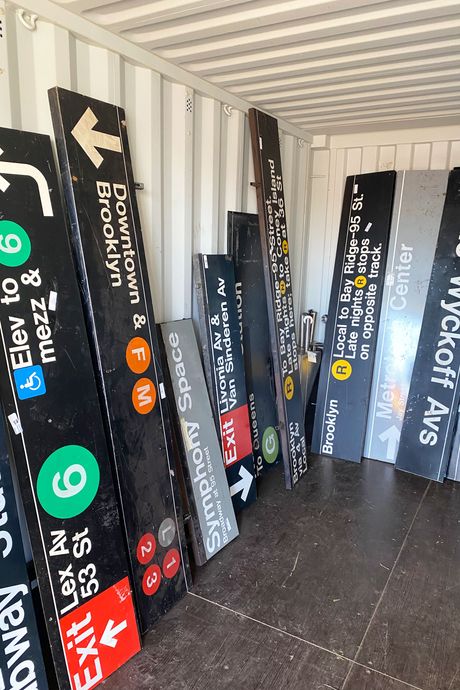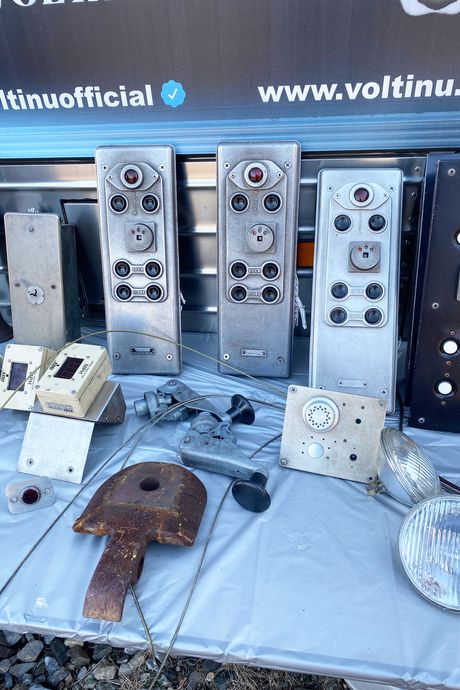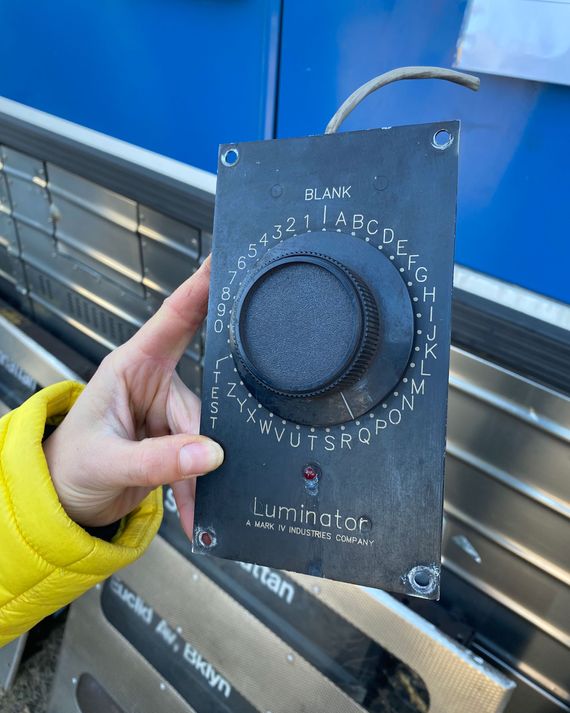
It was chilly and bright this morning while I waited in the line to enter the New York City Transit lot in Gravesend — one D-train stop north of Coney Island. Behind the chain-link fence, I could see what I — and a couple dozen rail fans — had come for: enameled-steel and aluminum signs fanned out on the gravel. It wasn’t a madhouse yet at the MTA’s third annual memorabilia sale; we were in the first group, scheduled for 9 a.m. Within a couple days of the sale’s announcement earlier this month, all the slots had been taken.
While the MTA sells its ephemera online year-round, it began running these pop-ups during the pandemic in 2021. But it’s still a bit of an ad-hoc operation. At the front of the line, the guard passed me an unalphabetized spreadsheet about four pages long and asked, “Can you find your name on this list?” Once my friend and I were vetted, we were greeted by a pair of enthusiastic employees. The mood was good. The pop-up, which is happening for three days this week, offers all the scuffed signage one might desire for just about every train line, restroom placards complete with Braille, and long strip maps from subway cars. There’s also some furniture and equipment, like worn wooden benches, garbage cans, and a small, mysterious table of gadgets used by conductors and bus drivers. It’s all available to take home right away (sans shipping fees!) or simply to look at, attracting transit true believers and anyone curious enough to make the trek to south Brooklyn.


The biggest and most unusual signs — like one for 34th Street or another sporting the symbol for the now-defunct V train — were priced in the thousands. Many more, though, could be had for a few hundred bucks or less, like a pile of narrow 18th Avenue signs going for $90. Shoppers wandered around the scene with their heads down and greeted one another here and there. “You’re the guy who bought the Dean Street sign last year!” one guy said to someone admiringly.
Beyond the signs, various objects were scattered around the lot, like table sets from Grand Central’s dining area, train-crew cab windows with COVID-era stickers attached, and the red orbs that sit on top of station entrances — taken off of their posts, they looked a little like Poké Balls. The best deal may have been the barrel of stainless-steel grab holds, which were going for $25 apiece; some people were buying three at once. But the prices were not as low as years past, someone told us, when almost everything was 50 percent off — he thought the MTA had wised up to the fact that people will pay a lot to own a piece of the subway. He was in search of a train door to install in his basement, but there didn’t seem to be any for sale this time around.
I went looking for something compact but iconic for my apartment, and I left with a small steel sign with a payphone symbol and a vinyl bus sticker featuring the soon-to-be-gone Metrocard; my friend ended up with a device used to control old flip-dot bus signs made by a company called Luminator (she planned to remove its wires and hang it on her wall). For each of our purchases, we were given a certificate of authenticity signed by Paul Dvoskin, the director of the MTA’s asset-recovery division, and a collectible sticker. On our way out, we passed by a man lugging a striking L-train sign with two arrows that once pointed down a pair of staircases (perhaps from the recent renovations to the Lorimer L station). “That’s a good get,” someone shouted to him.
Related MTA Stories
- The Beginning of the End of the Turnstile
- The Mostly Monochrome OMNY Kiosk Is Here
- Scenes From a Flooded New York






